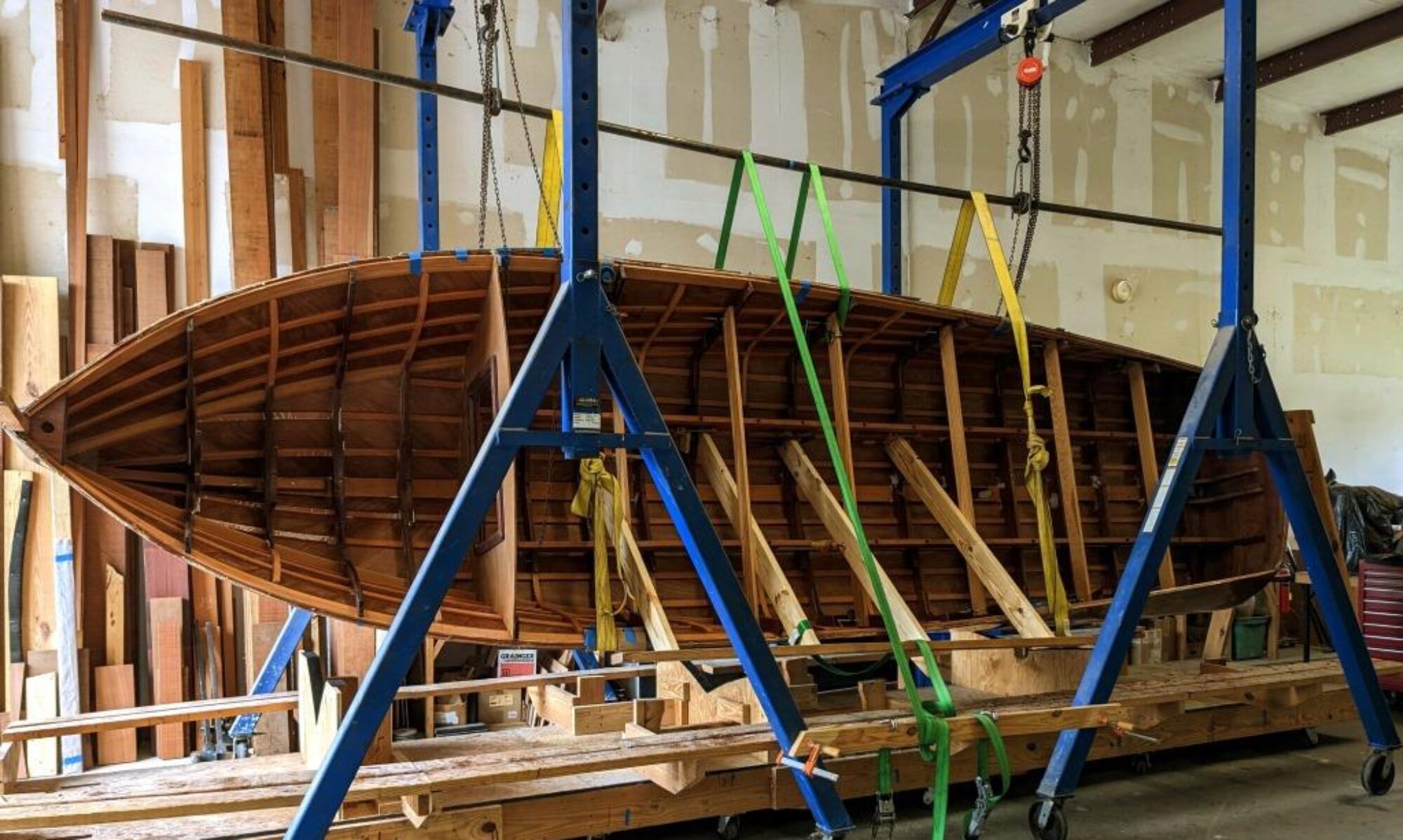
We talked about patching some rotten wood in the dashboard of a 1949 Chris Craft 17 ft. Deluxe Runabout in an earlier post here. Once we got the staining done, the next step was to lay on a bunch of varnish. In our case, it took about 5 coats of Interlux Schooner 96 to seal in the stain. Then we added about 8 coats of AwlWood MA urethane on top of that to get a really nice, deep gloss. This is the scheme I plan to use for finishing the topsides of the boat as well. The AwlWood is a new product for the U.S. It’s been available in New Zealand for a few seasons, and has held up well there.

Everyone who’s ever done any work with clear wood finishes has their special tricks and recipes for success. But the basics are pretty straightforward. First, make sure the pores of the wood are filled and sealed. In our case, we used Interlux filler stain to match what Chris Craft did some 65 years ago. This stuff comes in a paste that you thin to the consistency of thick house paint, and then rub on with burlap. You massage it into the pores of the wood and then wipe off the excess. One advantage of these thick filler stains is that they hide imperfections pretty well. You can barely see the “dutchman” I glued in to repair this dashboard. But check out the earlier post to see how that was done.
Make sure to let that cure well. Then lay on a few coats of varnish, making sure to let each one cure before adding the next. I sand minimally between these coats, just to knock off dust nibs and large imperfections. But I wait until I’ve got several coats built up to sand it flat. Once it’s flat, then you’re ready to start working on the “last coat”. By now, you should have enough practice in that you’re not getting dry spots or runs. Sand well between each coat with the idea that the next one will be your last. Eventually you’ll get lucky (and/or skillful enough) and you’ll get a good coat that looks good enough to call it the final one.

